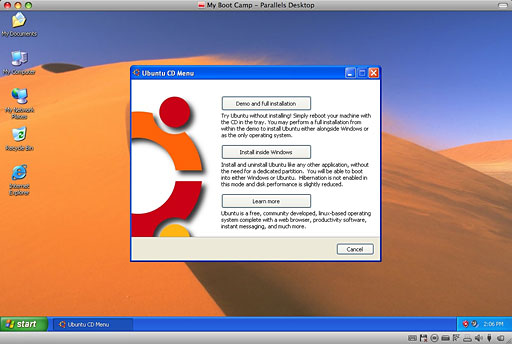

- #Easy to boot linux how to#
- #Easy to boot linux iso#
- #Easy to boot linux windows 8#
- #Easy to boot linux download#
#Easy to boot linux how to#
RELATED: How to Boot and Install Linux on a UEFI PC With Secure Boot You can then resize it normally, and BitLocker will be re-enabled on the partition after you reboot your computer. Instead, you’ll need to open the Control Panel, access the BitLOcker settings page, and click the “Suspend protection” link to the right of the encrypted partition you want to resize. If you’re using BitLocker encryption on Windows, you won’t be abne to resize the partition. Right-click the Windows system partition - that’s likely your C:\ drive - and select “Shrink Volume.” Shrink it to free up space for your new Linux system. To do so, open the Disk Management utility - press Windows Key + R, type diskmgmt.msc into the Run dialog, and press Enter. However, you may just want to shrink your Windows system partition from within Windows itself to avoid any potential problems. Most Linux installers allow you to resize Windows NTFS partitions, so you can do this during the installation process. Otherwise, it’s time to resize that existing Windows partition so you can make space for a new Linux partition. If you already have some unallocated space or a separate hard drive for Linux, that’s perfect.

You’ll probably want to resize your Windows system partition to make room for Linux. This will save you the trouble of resizing the partition later. If you’re setting up a PC from scratch, be sure to select the “Custom install” option and tell Windows to use only part of the hard drive, leaving some unallocated space left over for Linux. Your PC probably already has Windows installed on it, and that’s fine. RELATED: How to Install and Dual Boot Linux on a Mac Install Windows First
#Easy to boot linux windows 8#
It’ll automatically set up a Grub2 boot loader menu that lets you choose your preferred operating system each time you boot your computer.Īlthough the broad outlines are simple, this can be complicated by a number of issues including UEFI Secure Boot requirements on Windows 8 PCs and disk encryption. Boot from that drive and install it on your system, making sure you select the option that installs it alongside Windows - don’t tell it to wipe your hard drive. Install Linux Second: Choose your Linux distribution and put its installer on a USB drive or DVD.If you’re installing Windows from scratch, be sure to leave some free space on the drive for Linux. You’ll usually need to resize your Windows partition to make room for Linux. Make Room for Linux: You’ll need free space on your Windows system drive to install Linux, or possibly a second entirely different hard drive if you have a desktop PC.if you install Windows second, it will ignore Linux, and you’ll have to go through some trouble to get your Linux boot loader working again. If you install Linux second, it can set up its boot loader properly to happily co-exist with Windows. If not, be sure to install Windows first, before you install the Linux system. Install Windows First: If you already have Windows installed, that’s fine.I think most people will opt for the former, at which point UNetbootin downloads Linux for you, then copies it to your flash drive (and makes the drive bootable).Here’s the basic process you’ll need to follow:
#Easy to boot linux iso#
a version of Linux) or, if you already have one, an ISO file.
#Easy to boot linux download#
Just download and run the program, then choose a Linux distribution (i.e. The beauty of this tool is that it does everything for you (except supply the flash drive–I recommend something like the Kingston DataTraveler 108 8GB drive, which Newegg sells for the amazingly low price of $7.99 shipped). Okay, but you don’t have a master’s degree in programming, so how are you supposed to create this mythical Linux boot drive? It’s easier than you might think thanks to an open-source utility called UNetbootin. By booting Linux from a flash drive, you get a full-blown operating system, one that can read the main drive and, usually, copy its contents somewhere safe (like the cloud, an external hard drive, or even a network drive). Just because Windows is hosed doesn’t mean you can’t access the files on your hard drive.


 0 kommentar(er)
0 kommentar(er)
